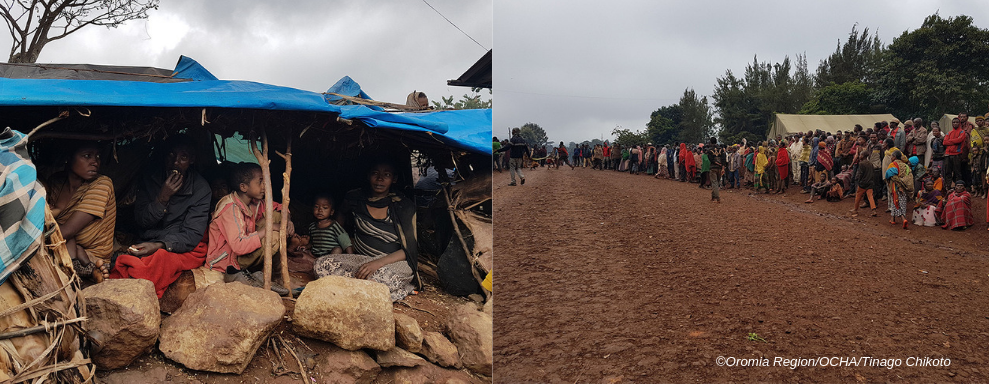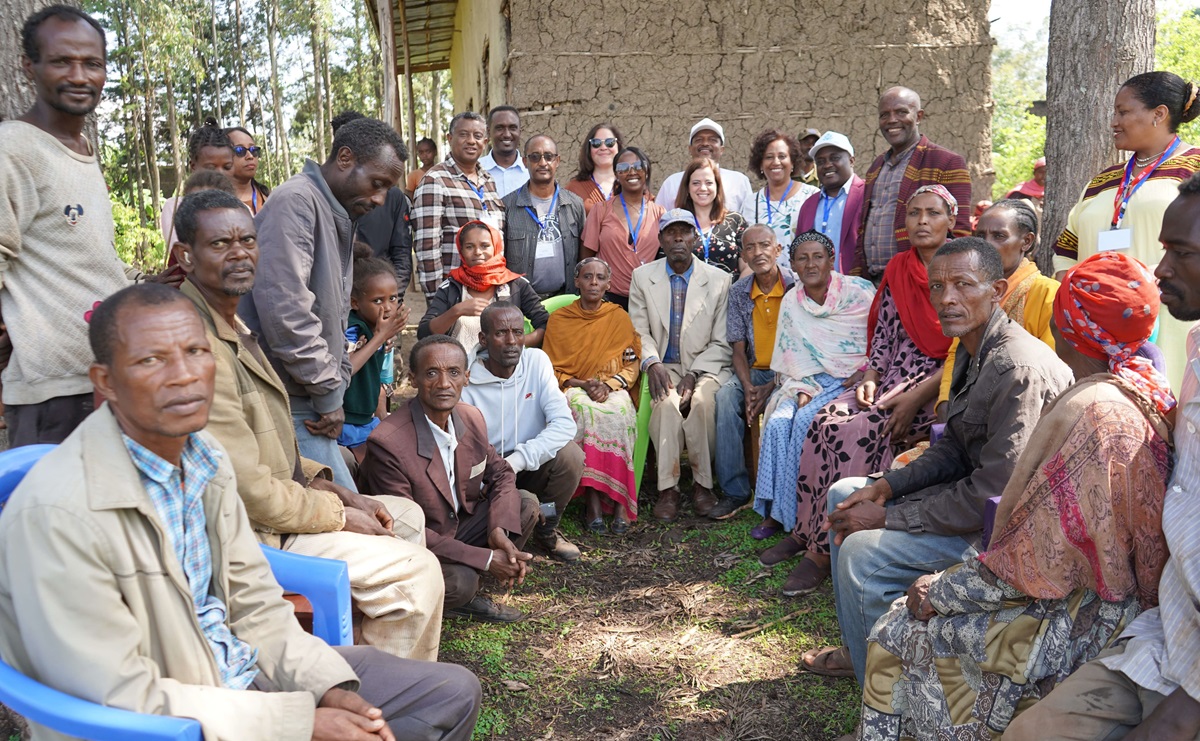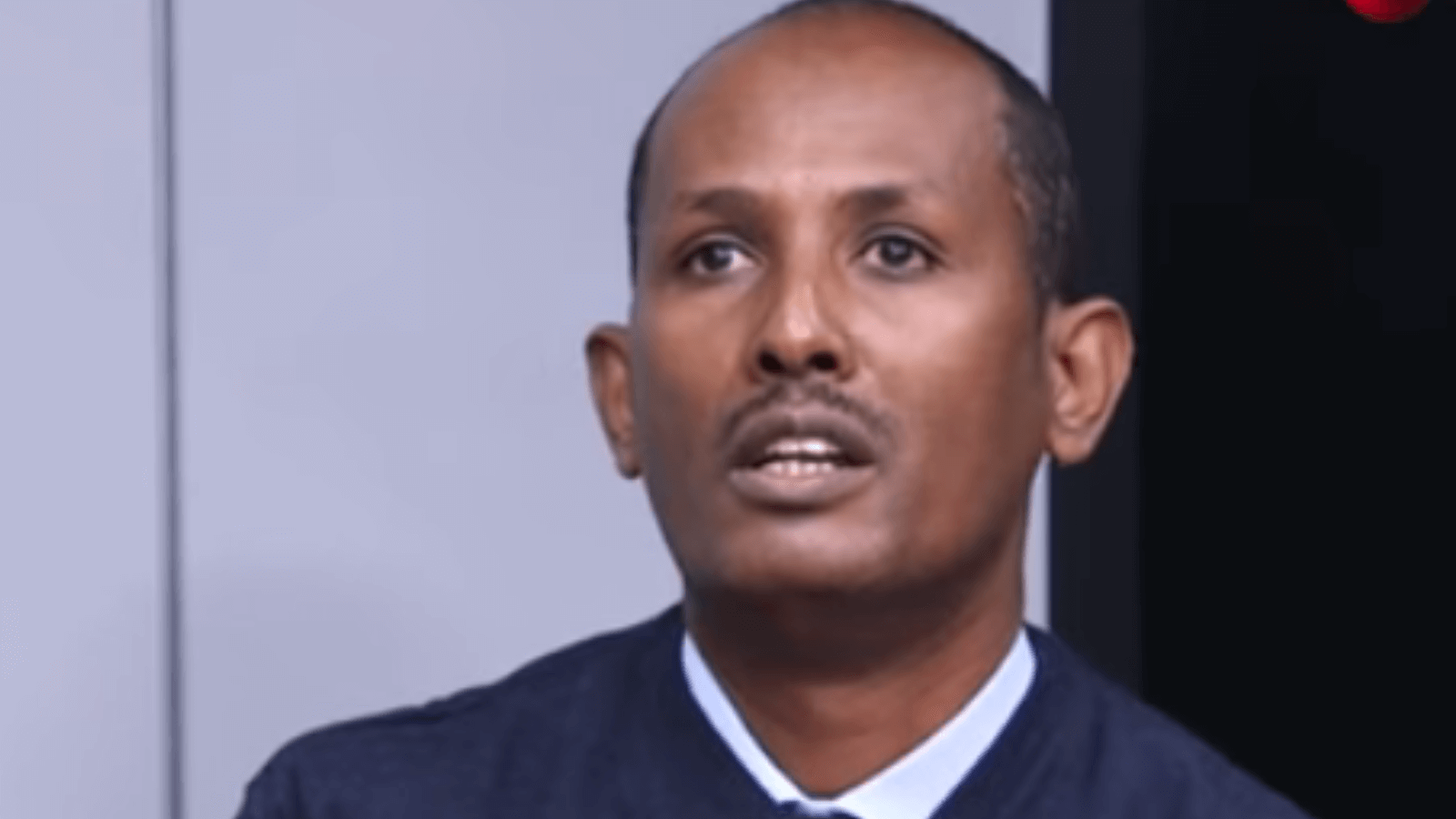News: Nearly 540,000 displaced in Benishangul Gumuz; 1.4 m people in SNNPR need assistance; & 51,000 secondary displacement in Wellega, Oromia: UN

Addis Abeba: August 18/2021 – More than 538,000 people are displaced in Benishangul Gumuz regional state, while nearly 1.4 million people across 16 zones and 6 special Woredas of the the Southern Nations, Nationalities and People’s Region (SNNPR) are in need of humanitarian assistance; and in East and West Wellega zones of Oromia regional state, there are more than 51,000 secondary displaced persons, as new displacements continue to be reported, according to the UNOCHA’s latest bi-weekly Humanitarian Bulletin.
According to the bulletin, out of the more than 538,000 people displaced in Benishangul Gumuz state, about 384,490 (71 per cent) are residing within Metekel, (270,684), Kamashi (95,989) and Assosa (17,817) Zones. The remaining 148,000 are displaced to the neighboring Awi (77,543) and Wellega (69,469) Zones. Following the peace agreement made between UAG and BGR Government, over 50,000 IDPs from Chagni Ranch collective site, Awi Zone of Amhara Region have been relocated to Dangur (18,880), Madura (15,142), Dibate (11,564) and Bulen (4,967) Woredas of Metekel Zone.
out of the more than 538,000 people displaced in Benishangul Gumuz state, about 384,490 (71 per cent) are residing within Metekel, (270,684), Kamashi (95,989) and Assosa (17,817) Zones
“Attacks by unidentified armed groups (UAGs) in Benishangul Gumuz Region, mainly in Metekel Zone, which have been ongoing since mid-2020, escalated and spread to Kamashi and Assosa Zones in recent months, displacing several people within and into neighboring regions,” the UN said.
The attacks resulted in loss of civilian lives and destruction of houses and properties. At least 12,000 houses were destroyed, 90 primary schools and 12 secondary schools were partially damaged and 41 primary and secondary schools were fully damaged in five conflict-affected Woredas of Metekel Zone.
The security situation in Kamashi zone remains tense where sporadic fighting between security forces and Gumuz Armed Groups continues to be reported. In Kamashi Zone UAG elements are in now control of most rural kebeles, including the recent seizure of Mizyiga (Soge) town along with 5 of the 12 (about 50 per cent) kebeles making up Mizyiga (Belojganfoy) WoredaThe insecurity has severely restricted humanitarian access. Movement restriction remains in place for Kamashi and Metekel Zones, and Odabildigilu Woreda of Assosa Zone.
1.4 m people in SNNPR need assistance
The Southern Nations Nationalities and Peoples’ Region has been affected by recurrent conflict, drought, fire, flood and disease outbreaks, and crop pests which requires extraordinary assistance for responses in the recent years.
1,375,361 people across 16 zones and 6 special Woredas of the Southern Nations Nationalities and Peoples’ Region need humanitarian assistance
According to the 2021 HRP, 1,375,361 people across 16 zones and 6 special Woredas of the region need humanitarian assistance, of which 337,281 are IDPs/Returnees and 1,038, 080 are food aid beneficiaries.
Humanitarian responses are ongoing by Government, national and INGOs as well as UN agencies in various parts of the region. Recently, Konso Zone and the surrounding special Woredas where many individuals were displaced due to internal conflict in mid-November 2020 remain to be the major focus area for the response. Respective humanitarian actors addressed about 60-80 per cent of the food, shelter, WASH, nutrition, health, and protection needs of the displaced people/returnees and relief food beneficiaries. Education (40-45 per cent) and Agriculture (50-55 per cent) are the sectors with the least response.
Humanitarian overview in the Wellega Zones
East and West Wellega has more than 51,000 secondary displaced persons, as new displacements continue to be reported, the Bulletine said. The security situation in the Wellega Zones is volatile and unpredictable due to continued clashes between UAGs & security forces, leaving most of the Wellegas inaccessible. Border areas to Kamashi Zone experience continued tensions, resulting in further IDPs. As clashes between UAGs and security forces continue in the area, some kebeles in Haro Limmu, Gida Ayana, Ebetu Woredas of East Wellega and the majority of West Wellega Woreda kebeles, except for Woreda towns, reported inaccessible. Continuing conflict in the border areas along Kamashi Zone of BGR has resulted in further displacements.
As clashes between UAGs and security forces continue in the area, some kebeles in Haro Limmu, Gida Ayana, Ebetu Woredas of East Wellega and the majority of West Wellega Woreda kebeles, except for Woreda towns, reported inaccessible
“Rapid need assessment conducted in Sasiga Woreda of East Wellega Zone identified multi-sectoral needs with food and ES/NFI being the first top priorities. According to the data received form the Disaster Risk Management Office, some 13,200 individuals who were
displaced from Kamashi Zone to Sasiga Woreda of East Wollega Zone need immediate assistance. A multi-sectoral response plan is being developed.”
Despite an increase in humanitarian needs due to conflict-induced new displacements, response has decreased from time to time in the Wellegas. While returnees continue to receive limited food, nutrition, and health support, but no support has been given to IDPs. Huge gaps remain in WASH, ES/NFI and protection response. UN/AS







